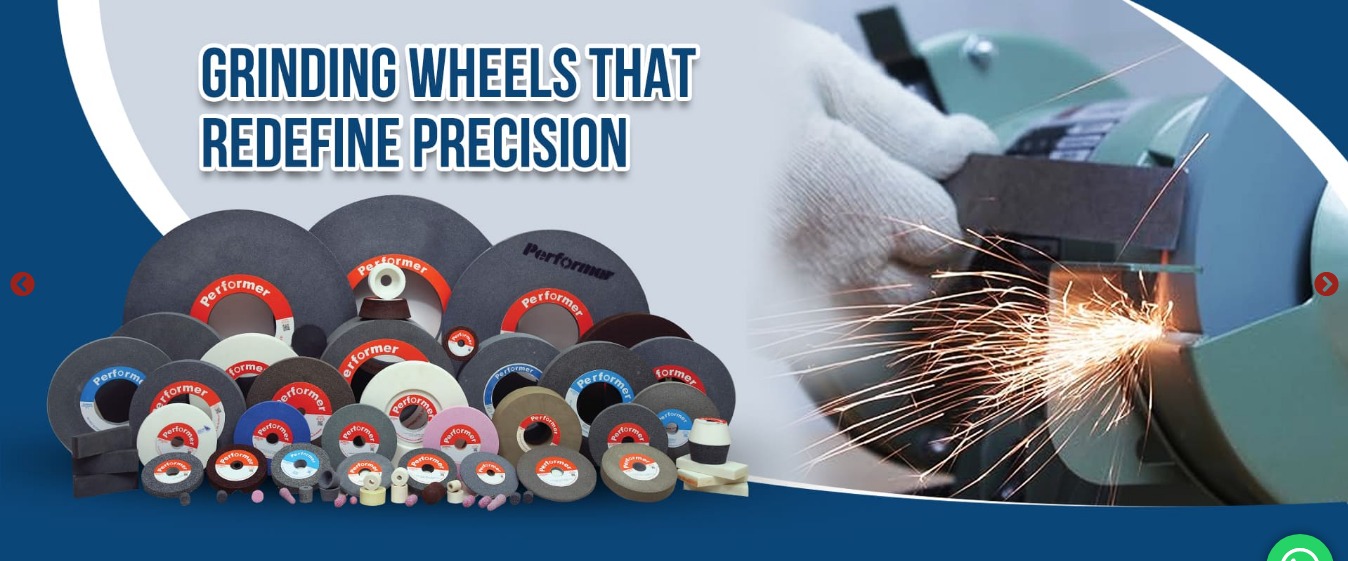There are different types of abrasives available for grinding applications, but the precision offered by vitrified grinding wheels makes them the best choice. Whether it’s their excellent dimensional accuracy or their stability at high speeds, vitrified grinding wheels are suitable for working with hardened steels, ceramics, stainless steel, cast iron, exotic metals, copper, aluminum, and more. From supporting surface grinding to internal grinding, cylindrical grinding to cutting tools, they are used in a wide range of applications. However, success in these tasks depends on choosing the highest quality vitrified grinding wheels.
We understand that not everyone is familiar with these grinding wheels, which often leads to choosing the wrong ones. But that won’t be the case anymore, as we at AE Abrasives Edge Pvt. Ltd. are sharing a comprehensive guide to vitrified grinding wheels through this blog.
What are Vitrified Grinding Wheels?
Before discussing what to look for when choosing vitrified grinding wheels, let’s first understand what they are. These grinding wheels are made of abrasive grains bonded together using ceramic or glass binders. They are manufactured by fusing abrasive grains and ceramic binders at high temperatures, resulting in highly rigid and porous grinding wheels used in precision grinding applications. This abrasive tool is also known for its durability and excellent performance in material removal without causing damage.
How to Choose the Right Vitrified Grinding Wheel?
As one of the leading vitrified grinding wheel suppliers, we at AE Abrasives Edge Pvt. Ltd. aim to educate our customers about these abrasive tools. This helps them understand which tool is best suited for their needs and how to choose the right one. Let’s explore the key considerations when selecting vitrified grinding wheels.
- Check the material you need to work with: Different materials require different vitrified grinding wheels. For example, aluminum oxide wheels are best for steel, while silicon carbide wheels are ideal for copper, aluminum, and bronze. For hard metals or ceramics, diamond wheels are the recommended choice.
- Look for the right grit size: Grit size varies depending on the application. Coarse grits are useful for fast material removal, while fine or very fine grits provide a smooth finish for delicate materials. For common grinding applications that require both surface finishing and material removal, a medium grit size works best.
- Consider the hardness of the bond: As mentioned earlier, abrasive grains are bonded to form a rigid grinding wheel. The hardness of this bond is important when choosing a wheel. For soft materials, vitrified grinding wheels with a hard bond are advisable. Conversely, wheels with soft bonds work better for hard materials.
- Structure of the wheels: If you need grinding wheels for harder metals, opt for vitrified grinding wheels with a dense structure. For applications that require heat minimization, improved cooling, and clog prevention, choose wheels with an open structure.
- Maintenance requirements: Ask manufacturers about maintenance and select vitrified grinding wheels that are easy to maintain. They should be easy to restore and reshape without needing frequent replacement.
Conclusion
When selecting the best vitrified grinding wheels for your specific application, all these factors are crucial to consider. Whether you are investing in vitrified wheels for the first time or looking to upgrade to better quality, always buy from reliable abrasive tool manufacturers. At AE Abrasives Edge Pvt. Ltd., we are proud to be a well-known supplier of vitrified grinding wheels, offering a variety of grit sizes and abrasive tools suitable for multiple applications.

